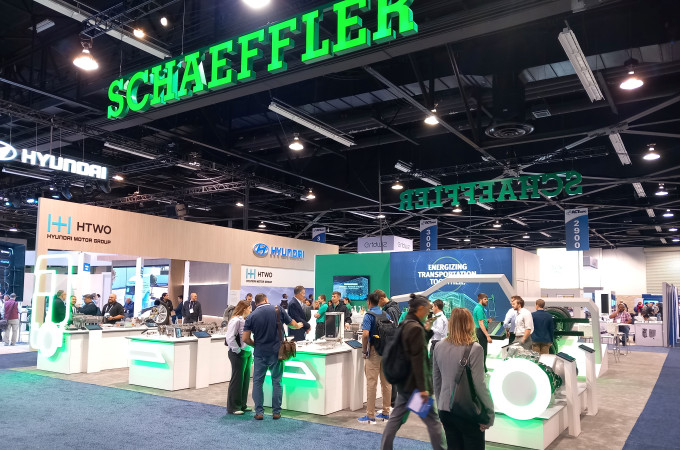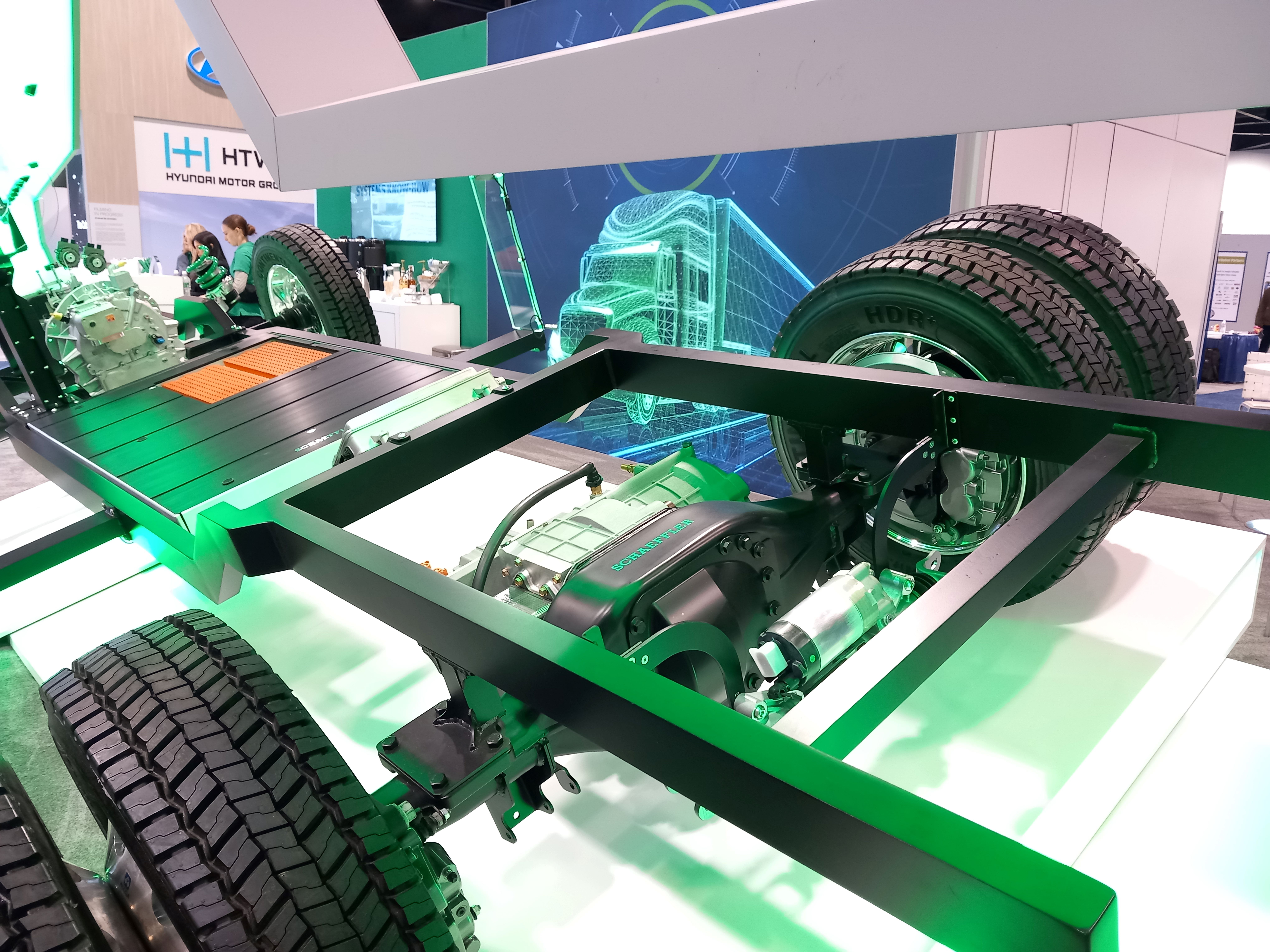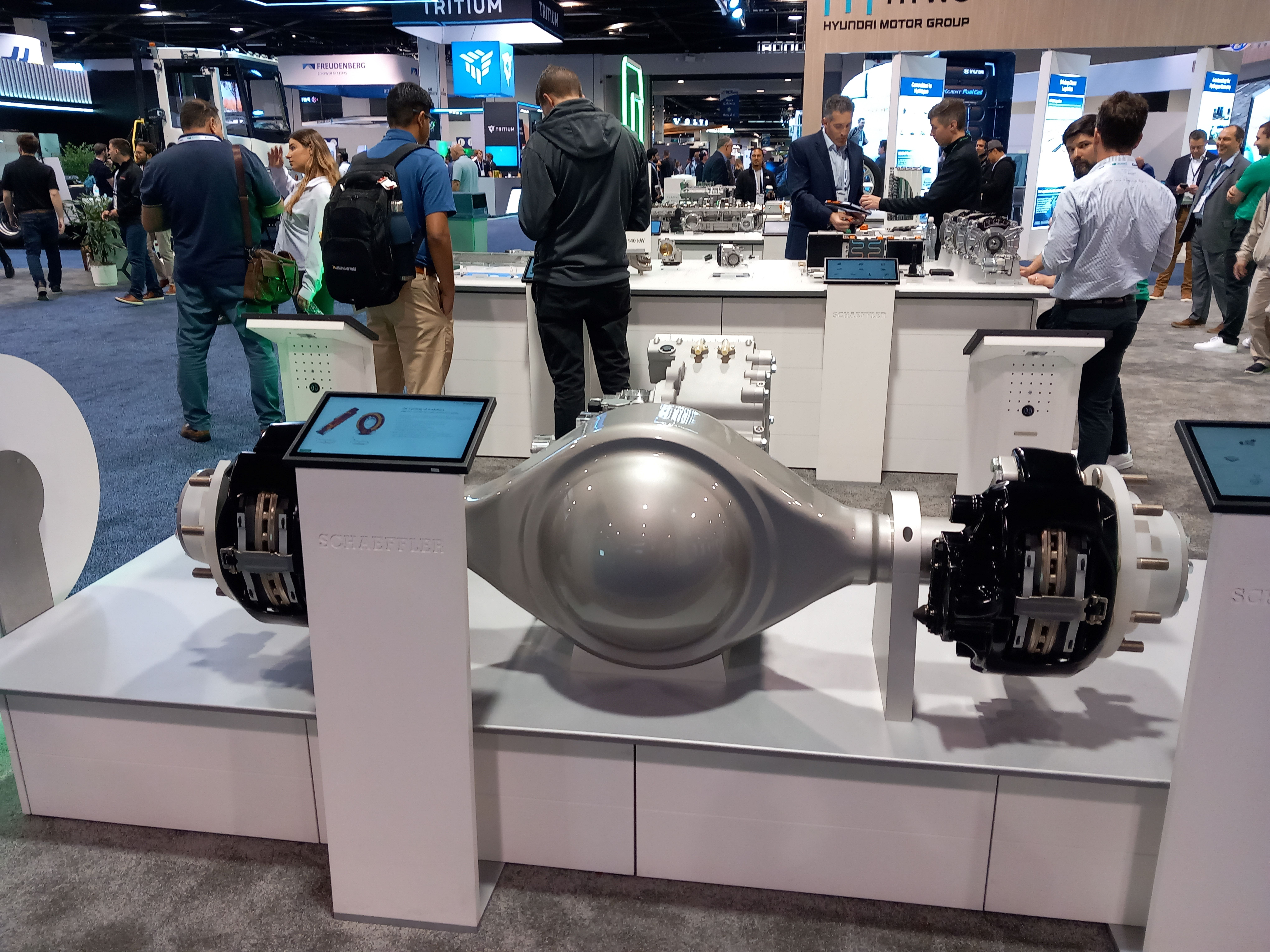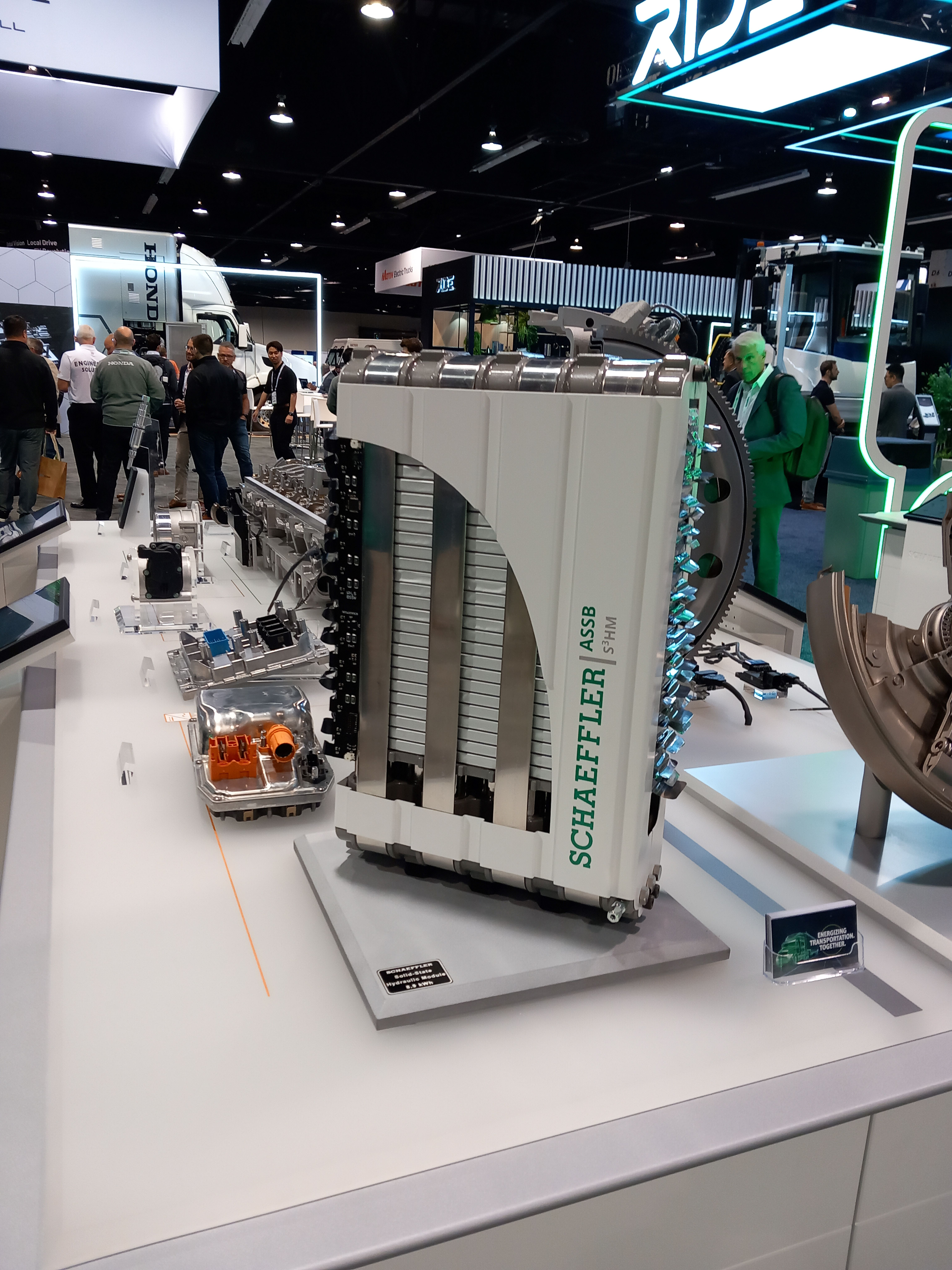ACT Expo 2025: Schaeffler presents “one-stop shop” of components following Vitesco merger
By Bradley Osborne - 12th June 2025

Schaeffler stand at ACT Expo 2025
USA – It is less than a year since German automotive components giant Schaeffler merged with Vitesco Technologies Group to form a single “motion technology company”. Retaining the Schaeffler name, the new company is now in the process of combining the two product lines of Schaeffler and Vitesco together under a single brand. At the company’s stand at the Advanced Clean Transportation Expo – held between 28 April and 1 May in Anaheim, California – the two companies’ portfolios were nearly indistinguishable. It marked the first time that the newly-merged company presented itself as a supplier of comprehensive system solutions to the North American commercial vehicle market.
Taking centre stage was a mocked-up vehicle chassis, meant to demonstrate the breadth of Schaeffler’s expertise in propulsion technologies as well as its industrial capabilities. Thomas Heck, who is head of SBU Battery Assembly and a key account manager at Schaeffler, guided Truck & Bus Builder through the various components of this hybrid “dynamic performance vehicle” demonstrator, starting at the rear end with the single-speed electric axle. This prototype, featuring stamped parts, an axle housing, a traction motor, and power electronics all designed and developed in-house, is set to enter production in a couple of years’ time. A two-speed version with transmissions also developed by Schaeffler will be introduced shortly after, extending the range of applications from light vehicles up to Class 6 or medium-duty.

Dynamic performance vehicle demonstrator
Moving along the vehicle, Heck pointed to a battery pack and a range-extending generator, using fuel to add around 200 miles onto the vehicle’s standard range. The range extender will enter production this year for a manufacturer of pickup trucks based in North America. As for the battery, Heck said that Schaeffler is looking into setting up its own pack assembly operations. At the front end of the vehicle, Heck highlighted valvetrain components (e.g., camshafts) and a steering system, all produced in-house. Generally speaking, the stamped parts and mechanical systems fall within Schaeffler’s original range of expertise, whereas the power electronics were introduced through the merger with Vitesco. In the steering system, certain parts were attributable to Vitesco: namely, the actuator, placed in the demonstrator to show that Schaeffler is now capable of implementing by-wire controls.
The Schaeffler group operates nineteen plants and nine research and development facilities in the Americas. Following the business combination with Vitesco, Schaeffler’s headcount in the region grew to 18,200 employees. Around 70% of its business in the Americas is in the original equipment automotive sector, including commercial vehicles. One crucial part of Schaeffler’s capabilities is its bearings production for a range of industrial applications; in the Americas, it supplies automotive bearings to Class 4+ commercial vehicles.
In merging with Vitesco, Schaeffler’s ambition is to become a “one-stop shop” for original equipment manufacturers developing fully-electric and hybrid electric vehicles. Greater integration of parts and systems leads to better optimisation and therefore a higher quality vehicle, Heck told T&BB. For Schaeffler, vertical integration does not just mean in-house development of various components and vehicle systems: a division within the group continues to design and build Schaeffler’s own manufacturing equipment, giving it further control over production quality.

Heavy-duty e-axle mock up
Electric vehicle and autonomous driving components at the Schaeffler stand
Moving on from the vehicle demonstrator, Heck showed T&BB a wide array of different products and prototypes; the highlights are listed below:
A mock-up of a Class 8 e-axle, with two scroll e-motors and bearings developed in-house. The point is not that Schaeffler will be producing its own heavy-duty e-axles – “there won’t be a Schaeffler AxTrax” – but rather to demonstrate its expertise to OEMs who require support in developing their own e-powertrain. The two motors provide operational flexibility, as one can be switched off when less power is required in order to conserve energy.
A fuel cell stack featuring “Innoplate” bi-polar plates developed through a joint venture with Symbio, together with sensors and control units supplied by Vitesco.
An 8.9 kWh solid-state battery module, demonstrating Schaeffler’s research and development into the newest energy storage technologies.
Actuators for a range of purposes, e.g., power steering and systems redundancy in autonomous vehicles.
A “zone” control unit which replaces a conventional domain controller, managing components based on where they are in the vehicle (as opposed to managing components with certain functions). According to Heck, this “location-based” approach to electrical system design is targeted at software-defined vehicles.
Various engine and valvetrain subcomponents, including engine control units and NOx sensors brought in through the merger.

Solid-state battery prototype


